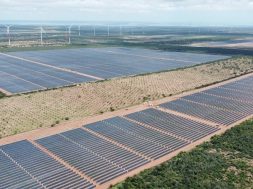
INTERVIEW-Japan’s Orix pushes into wind, geothermal as solar loses glint
Japan’s Orix Corp is ramping up its drive into renewable energy assets such as wind farms and geothermal projects, as it runs out of room to extend a push that has made it the country’s biggest player in solar power. Orix, principally known as a financial services company, has built up Japan’s largest solar capacity after the 2011 disaster at the Fukushima nuclear plant sparked a hunt for alternative sources of energy. But Yuichi Nishigori, the head of Orix’s energy unit, said that expansion is gradually slowing due to a lack of suitable sites for new solar projects and moves by the government to cut tariffs. “We are slowly running out of land such as old factory sites and access to power grid networks,” Nishigori told Reuters in an interview late last week. Orix is now the fourth-biggest independent power supplier in Japan to non-residential users, and has approvals for 920 megawatts (MW) worth of solar capacity, of which 510 MW is operating.
“I suspect it would be difficult to raise capacity much further for the next few years. We could acquire solar plants that have already been built, but we aren’t considering that because the prices are expensive.” As a result, Nishigori said Orix had been investing heavily in offshore wind, geothermal and biomass in Japan, as well as building up energy assets in Asia including 1 gigawatt of wind power projects in India. Orix is a member of a consortium planning two 100-megawatt wind farms in eastern and northern Japan, both of which are expected to cost more than 50 billion yen ($490 million). Those plans got a boost in May when the government, which has been promoting wind power, relaxed rules for building turbines in the country’s harbours and ports. Orix aims to increase the value of its overall energy assets to around 500 billion yen by the end of March 2018, Nishigori added. He did not give their current value. The following table lays out installed renewable capacity in Japan since mandatory tariffs were introduced in July 2012. Capacity figures are in megawatts and are as of the end of June 2016. Source: Ministry of Economy, Trade and Industry.
Renewable Installed capacity
Solar (residential) 4,130
Solar (non-residential) 24,990
Wind 570
Small, medium hydro 190
Geothermal 10
Biomass 570
Total 30,470
($1 = 101.3800 yen)
(Reporting by Osamu Tsukimori; Edited by Aaron Sheldrick and
Joseph Radford)
















